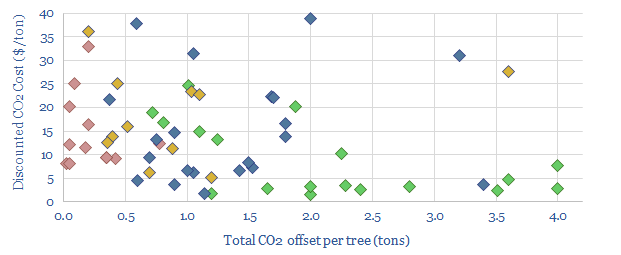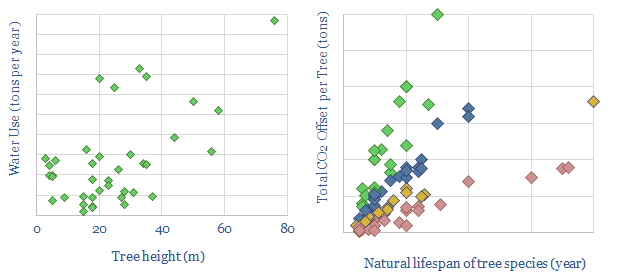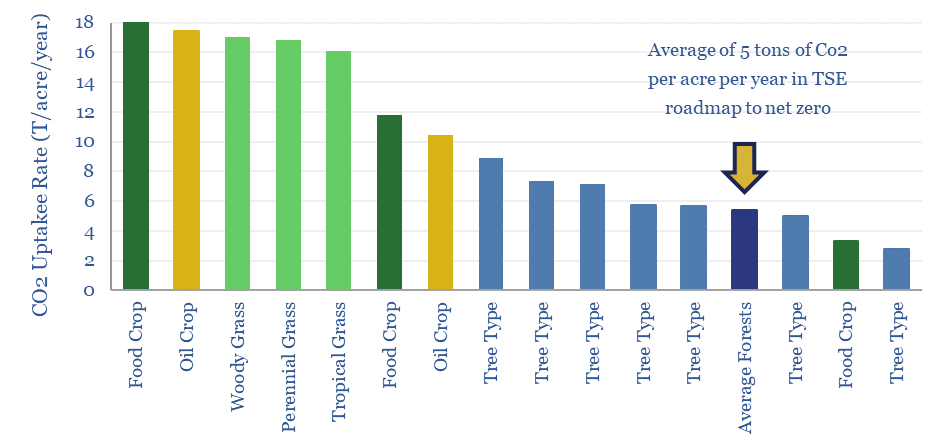Different plant species fix 3-30 tons of CO2 per acre per year, as they accumulate biomass at 2-40 tons per hectare per year. The numbers matter for biofuels and for nature-based solutions. Hence this data-file compiles technical data into CO2 and biomass accumulation by plant species and by tree species, in different regions globally.
Biomass accumulation and CO2 fixation are quantified in this data-file, based on over 100 technical papers and other industry sources. Biomass accumulation is shown in dry tons per hectare per year. CO2 fixation is in tons per acre per year. Covered trees and crops include Bamboo, Corn, Elephant grass, Eucalyptus, Jatropha, Mangrove, Napier grass, Oak, Oil Palm, Pine, Poplar, Soybean, Spruce, Sugarcane and Teak.
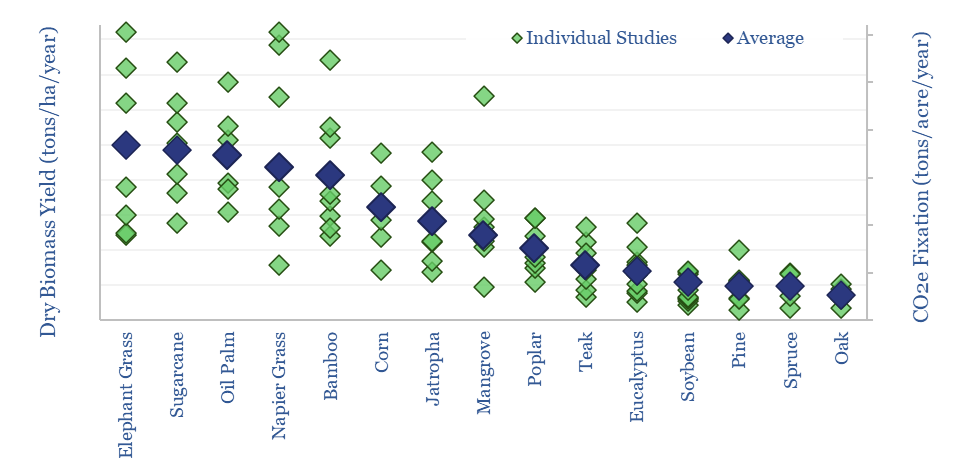
The most likely Roadmap To Net Zero requires a 15-20GTpa CO2 sink using nature-based solutions, which in our base case, involves 3bn acres of reforestation, absorbing 5 tons of CO2 per acre per year. If we fail to hit this target, it is extremely unlikely we ever reach net zero.
5 tons of CO2 per acre per year is a conservative estimate for afforestation and reforestation initiatives, as CO2 uptake varies by species, by region and by year. Some tree species, especially in tropical climates, fix 7-12 tons of CO2 per acre per year, such as eucalyptus, teak, poplar and mangroves.
Biomass fixation can be 50%-5x higher, at 15-25 dry tons per hectare per year for some food crops and energy crops, fixing 10-20 tons per acre per year of CO2.
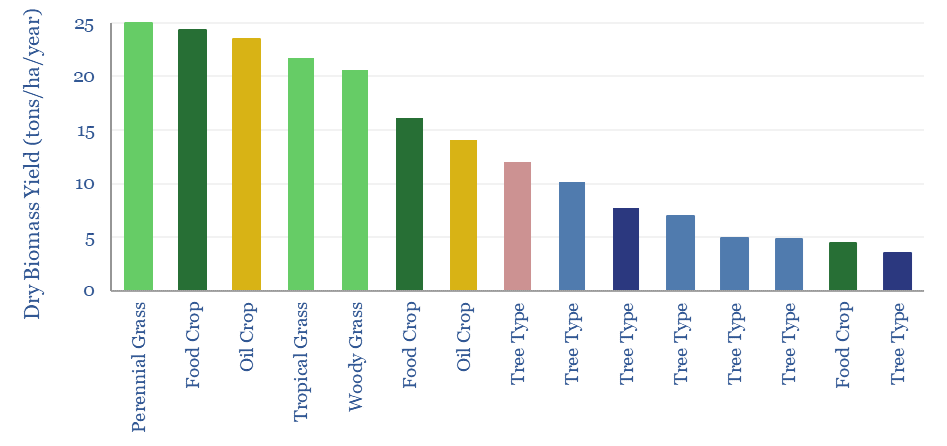
But only a portion of that dry biomass is directly usable, for example as corn (45% of the dry corn plant), soybeans (40%), sugar (35%), palm oil (20%), jatropha oil (10%).
When used as food, no net CO2 is sequestered, of course, as the sugars, starches and proteins get metabolized then respired (yielding CO2), or egested and then decomposed (yielding biogas and/or CO2).
When used for energy, usable biomass can be upgraded into biofuels, which then substitute for hydrocarbons. However, fermentation, biodiesel production or upgrading to jet can directly release CO2, or otherwise be so energy intensive, that it would have been more climate-positive simply to reforest the land that was used to grow the energy crops. The answer varies case by case.
The real opportunity in biofuels therefore is to also harness 50-90% of the lignocellulosic energy that is contained in fast-growing grasses and crops, but which is not currently useful, and thus ends up decomposing. This could involve digestion into biogas, combusting sugar ethanol bagasse for power, second generation ethanol, bright green hydrogen, or fascinating options such as biochar.
The data-file tabulates hundreds of data-points from technical papers and industry reports on different tree and grass types. It also covers their growing conditions, survival rates, lifespans, rates of CO2 absorption (per tree and per acre) and their water requirements (examples below).
